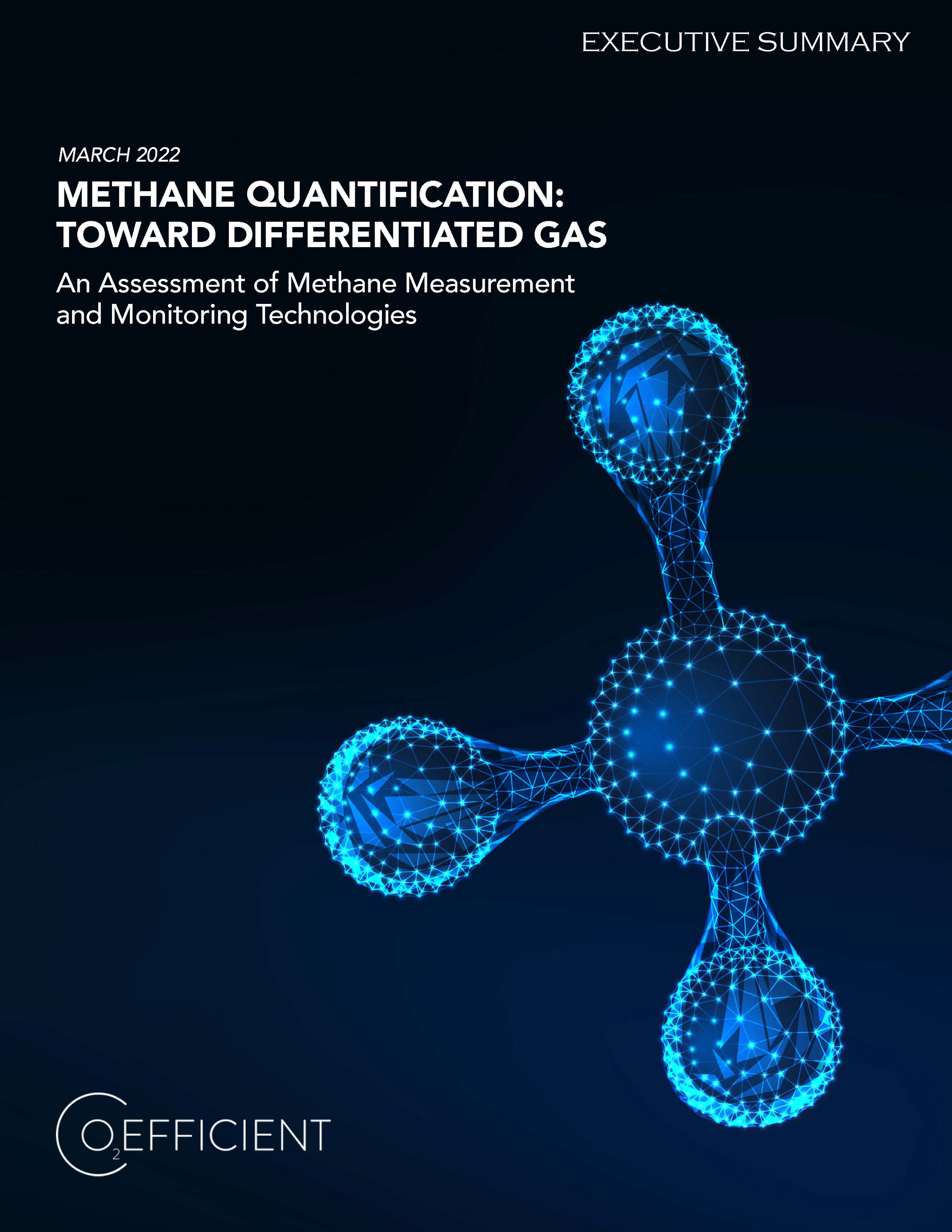METHANE QUANTIFICATION:
TOWARD DIFFERENTIATED GAS
aN ASSESSMENT OF METHANE MEASUREMENT AND MONITORING TECHNOLOGIES
New assessment reviews leading and emerging technologies that are being deployed for methane measurement and monitoring.
Methane Quantification: Toward Differentiated Gas - An Assessment of Methane Measurement and Monitoring Technologies is a new report reviewing leading and emerging sensor technologies that are being deployed for methane measurement and monitoring. With enhanced transparency of methane emissions across the supply chain, natural gas suppliers can begin to differentiate their products based on their environmental impacts.
The current environment has created a compelling leadership opportunity for the oil and gas sector to get ahead of regulator and investor expectations on methane emissions through quantification and reduction. A small number of companies are already pursuing this opportunity by adopting three principles for methane emissions measurement, monitoring, reporting, and verification, namely: Transparency, Trust, and Transactability.
Development of a framework that promotes strong performance metrics for all segments of the gas supply chain and a market for differentiated natural gas must connect the dots between transparency, trust, and transactability. A strong and robust future for natural gas will require high quality data and rigorous MRV to gain credibility. In addition, it will require the integration of methane emissions data with financial performance data that can help provide the currently missing link between ESG reporting and data-driven climate accounting.
We have an opportunity to ensure real emissions reductions, consumer trust, and new markets for differentiated products. This assessment addresses a critical piece of achieving this future.
This technology assessment reviews leading and emerging technologies that are being deployed for methane measurement and monitoring, specifically:
1. The measurement capabilities of various technology categories;
2. How specific technologies have been piloted or deployed in the field; and
3. Leading technology initiatives that have integrated multiple technologies, and in some cases, implemented approaches for independent verification of emissions and certification of differentiated gas.
It covers six technology categories and more than 30 detailed profiles of leading methane emissions technologies. This assessment also highlights “Technologies in Action”— leading technology initiatives where multiple stakeholders have collaborated to integrate multiple measurement and monitoring technologies in the field and validate the resulting data for use in reporting and certification.



